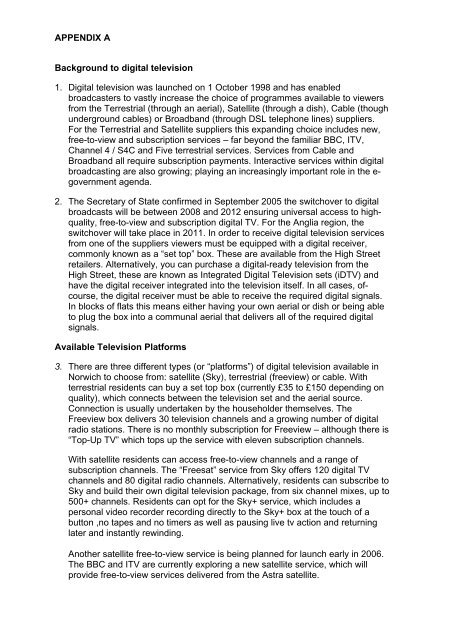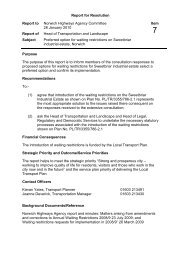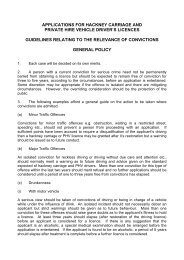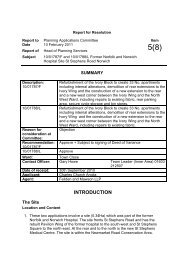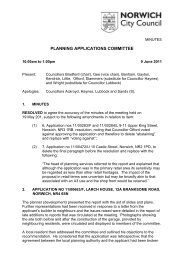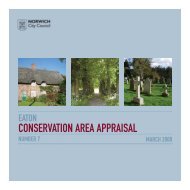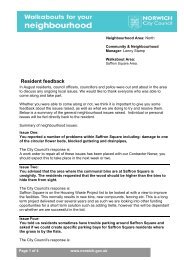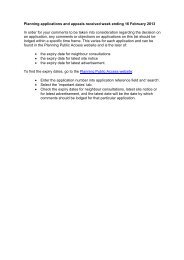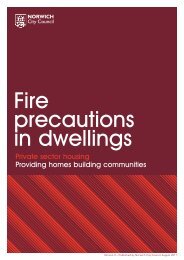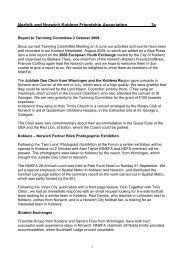Communal Aerial Upgrade Consultation - Norwich City Council
Communal Aerial Upgrade Consultation - Norwich City Council
Communal Aerial Upgrade Consultation - Norwich City Council
Create successful ePaper yourself
Turn your PDF publications into a flip-book with our unique Google optimized e-Paper software.
APPENDIX A<br />
Background to digital television<br />
1. Digital television was launched on 1 October 1998 and has enabled<br />
broadcasters to vastly increase the choice of programmes available to viewers<br />
from the Terrestrial (through an aerial), Satellite (through a dish), Cable (though<br />
underground cables) or Broadband (through DSL telephone lines) suppliers.<br />
For the Terrestrial and Satellite suppliers this expanding choice includes new,<br />
free-to-view and subscription services – far beyond the familiar BBC, ITV,<br />
Channel 4 / S4C and Five terrestrial services. Services from Cable and<br />
Broadband all require subscription payments. Interactive services within digital<br />
broadcasting are also growing; playing an increasingly important role in the egovernment<br />
agenda.<br />
2. The Secretary of State confirmed in September 2005 the switchover to digital<br />
broadcasts will be between 2008 and 2012 ensuring universal access to highquality,<br />
free-to-view and subscription digital TV. For the Anglia region, the<br />
switchover will take place in 2011. In order to receive digital television services<br />
from one of the suppliers viewers must be equipped with a digital receiver,<br />
commonly known as a “set top” box. These are available from the High Street<br />
retailers. Alternatively, you can purchase a digital-ready television from the<br />
High Street, these are known as Integrated Digital Television sets (iDTV) and<br />
have the digital receiver integrated into the television itself. In all cases, ofcourse,<br />
the digital receiver must be able to receive the required digital signals.<br />
In blocks of flats this means either having your own aerial or dish or being able<br />
to plug the box into a communal aerial that delivers all of the required digital<br />
signals.<br />
Available Television Platforms<br />
3. There are three different types (or “platforms”) of digital television available in<br />
<strong>Norwich</strong> to choose from: satellite (Sky), terrestrial (freeview) or cable. With<br />
terrestrial residents can buy a set top box (currently £35 to £150 depending on<br />
quality), which connects between the television set and the aerial source.<br />
Connection is usually undertaken by the householder themselves. The<br />
Freeview box delivers 30 television channels and a growing number of digital<br />
radio stations. There is no monthly subscription for Freeview – although there is<br />
“Top-Up TV” which tops up the service with eleven subscription channels.<br />
With satellite residents can access free-to-view channels and a range of<br />
subscription channels. The “Freesat” service from Sky offers 120 digital TV<br />
channels and 80 digital radio channels. Alternatively, residents can subscribe to<br />
Sky and build their own digital television package, from six channel mixes, up to<br />
500+ channels. Residents can opt for the Sky+ service, which includes a<br />
personal video recorder recording directly to the Sky+ box at the touch of a<br />
button ,no tapes and no timers as well as pausing live tv action and returning<br />
later and instantly rewinding.<br />
Another satellite free-to-view service is being planned for launch early in 2006.<br />
The BBC and ITV are currently exploring a new satellite service, which will<br />
provide free-to-view services delivered from the Astra satellite.


